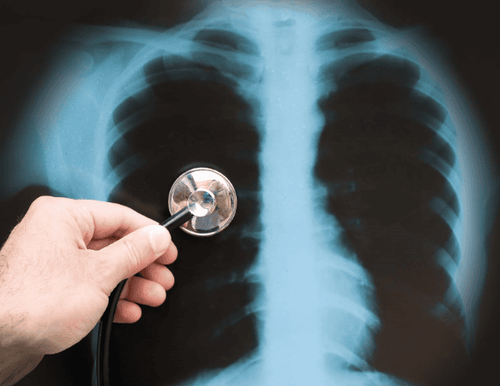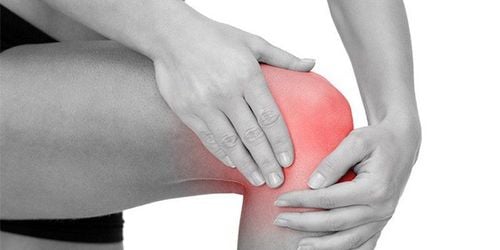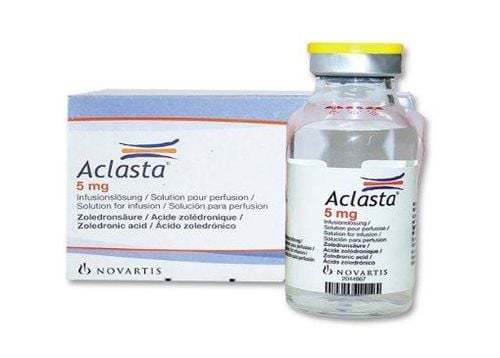This is an automatically translated article.
This article is professionally consulted by Master, Doctor Vu Thi Hau - Radiologist - Department of Diagnostic Imaging and Nuclear Medicine - Vinmec Times City International General Hospital. The doctor has many years of experience in the field of diagnostic imaging including magnetic resonance, CT and ultrasound.X-rays can show changes in the amount, shape, and structure of the bones. Based on the images on the X-ray provided, it will effectively support the doctor to accurately diagnose the fracture condition that the patient is experiencing.
1. Normal bone and joint image in X-ray
1.1. Bones Long bones, also called tubular bones, include:Bone head (also called cancellous bone) Bone body has: Solid bone (also called cortical bone) where there is a large amount of contrast material and the canal where there is no contrast In the wall Part of bone cartilage includes: Cartilaginous border of bone, cartilage connecting at the end of bone. The periosteum will not be contrasted, so it will not be visible on the X-ray. Flat bones, small bones: The ends of the bones are covered with a dense shell of bone, so the contrast is poor, on film almost only the ends of the bones are seen.
1.2. Joints The joints that are easily seen on the film include: bone ends, bone clefts.
With young children, the joint gap is seen wide because the cartilage at the ends of the bones is still a lot. The non-contrast parts will not be visible such as: synovial membrane, meniscus, ligaments. Joints are only visible on X-ray when joints are calcified. 1.3. Bone nucleus The nucleus in the bone is also called the ossification point: When they are young, they are located at the ends of long bones, when they are mature, they are ossified and merged into the body of the bone. Flat bones, small bones: All have a bone nucleus, which is the cartilage that covers the ends of the bones. Bone nuclei develop: Initially, the structure of cartilage tissue does not contain contrast, after the ossification process takes contrast from the bone body, it is gradually seen on X-ray film.
2. Abnormal bone changes on X-ray film

2.2. Changes in bone shape Changes in bone shape are quite common and common. When the entire skeleton is significantly larger than normal, this is an abnormal change, which is found to be caused by an endocrine disorder. Or the case where the skeleton is much smaller than normal, caused by malnutrition, rickets.
The most common abnormalities are deformities caused by fractures, bone dysplasia, or osteosarcoma.
2.3. Changes in bone structure Based on the contrast of bone structure so that people can see abnormalities in bone structure on X-ray film.
Osteoporosis Osteoporosis is a decrease in the amount of calcium in the bones. The disease is common in the form of thin bones, appearing more from middle age. Caused by long-term immobilization at the fracture site, or osteoporosis seen in the early stages of osteoarthritic tuberculosis and osteomyelitis...
Osteoporosis causes bone density to decrease, bone cortical thinning, and bone fibers thin and sparse. With osteoporosis, the ridges and trabeculae become visible on x-rays, caused by decreased calcium levels in the bones.
Bone resorption Bone loss is an image where there is no longer bone structure in a certain position, the bone organization is then replaced by another.
Osteoporosis can be seen in the apex or in the body, it can also be in the canal or in the cortical bone. The fracture boundary is often seen in the fractured state, which can be clearly seen.
At the bone resorption site, the contrast level is uniform, a septum may also appear, or it can be seen in the calcified body, or the contrast has a dark nodular shape, this is the shape of the broken bone fragments. .
Bone loss is common when patients present with osteolytic malignancies, both at the primary level and with secondary metastases.
Osteoporosis Osteoporosis is the phenomenon of increased bone density, thickened cortical bone, close and thick bone fibers. On X-ray, thick, dark-colored bony masses are most evident in the trabecular or inner periosteum. Special bone is common in cases of alveolar bone fracture, chronic osteomyelitis, metastatic bone tumor... The phenomenon of thickening of long bones causes the canal to be covered.
Bone death is a condition in which the bone structure is only present with mineral components and no organic substances. Dead bone may appear in the inflamed bone marrow, aseptic necrosis of the synaptic cartilage and the ossification process.
The bone changes described above can occur independently or in combination in a number of diseases.
3. X-ray in fracture diagnosis

3.1 Diagnostic requirements With large fractures, large bones, and displaced bone axes, the diagnosis will be easier. As for the case of broken bones or broken bones without displacement, the diagnosis is always more difficult and takes more time. For the X-ray diagnosis of fractures, it is advisable to note the bright lines that are not fracture lines of the bone but are easily confused such as the junction of the bone head and the cartilage gap, or the imprints caused by blood vessels. ..
3.2 Determining the diagnosis through film images Determining the diagnosis of bone fractures on film:
Focusing position of the fracture This position can be determined based on anatomical landmarks in the skeletal system of the patient. patient. For long bones, it will usually be zoned depending on the specific location of the region. For example: 1⁄3 above, 1⁄3 below or midpoint...
General morphology of the fracture, understood as broken lines Types of fractures that can be encountered such as bevel fractures, concussion fractures, fracture reaching the joint, breaking through the contiguous cartilage causing cartilage detachment, green branch fracture (only in children), clavicle fracture, subsidence fracture, transverse fracture...
In addition, based on the morphological condition of the socket fracture to determine the fracture line associated with the pathology.
Determination of displacement of fractures without displacement, displacement to the side, displacement of short overlap, displacement of apart, displacement of angle flexion, displacement of rotation. To determine displacement at the foci of long fractures, it is based on the head of the peripheral fracture.
3.3 Based on some common fracture sites Hand bones: Neck fracture in case of arm surgery, radial fracture at the lower end, supracondylar fracture in the arm, partial fracture fingers, ulnar fractures with radial dislocation, fractures... Leg bones: Fracture of the femoral neck, fracture of the transverse trochanter in the femur, fracture of the femoral body, fracture of the lower leg, fracture of the plate tibia, broken 1⁄3 of lower fibula with broken medial ankle, broken patella...
4. Notes when taking X-rays of bones
4.1 Do not abuse X-ray many times In addition to the cause from the unqualified X-ray machine, the patient is also exposed to radiation from the abuse of both the time of taking and the number of scans. The consequence of this is that the excretions of X-ray patients also cause great harm to those around them.4.2 Pregnant women Despite bone trauma, X-rays during pregnancy will most likely be greatly affected by radiation to the fetus. Mothers should be very cautious about fetal ultrasound for other than diagnostic purposes, because the radiation emitted by the machines used can cause harm to the fetus such as miscarriage, malformations...
X-rays are valuable for the diagnosis and treatment of bones and joints in general and fractures in particular, both in children and adults. However, the abuse of X-rays will cause bad consequences not only for the patient but also for those around him.
Please dial HOTLINE for more information or register for an appointment HERE. Download MyVinmec app to make appointments faster and to manage your bookings easily.














